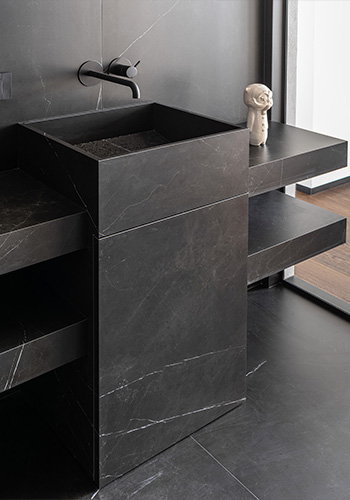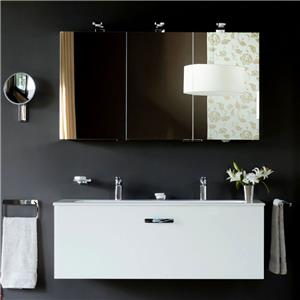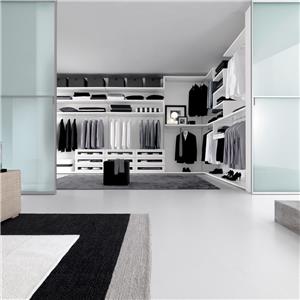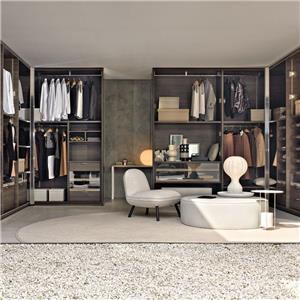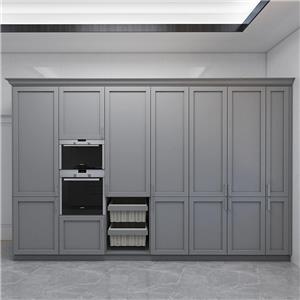Popular Material for Furniture Customization: Sintered Stone
Popular Material for Furniture Customization: Sintered Stone
Sintered stone is an innovative material composed mainly of natural clay, silicon dioxide, feldspar powder, and other inorganic oxides. It is formed using a press exerting over ten thousand tons of pressure, combined with NDD technology, and then fired at temperatures exceeding 1200°C. Due to its superior physical properties, sintered stone is a favourite of many designers and widely used in both indoor and outdoor space design and cabinet customization, bringing limitless possibilities to spatial expression.
Characteristics of Sintered Stone
Durability: Sintered stone is highly resistant to scratches, stains, and impacts. It can withstand heavy use and harsh conditions without showing significant wear.
Heat Resistance: It can tolerate high temperatures without burning, scorching, or cracking, making it ideal for kitchen countertops and outdoor applications.
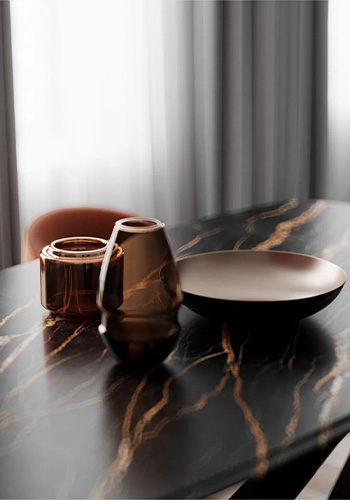
Chemical Resistance: The material is not affected by chemicals or solvents, ensuring it maintains its appearance and integrity even when exposed to harsh cleaning agents.
Non-Porous Surface: Sintered stone has a non-porous surface that resists moisture, bacteria, and mold growth. This makes it a hygienic choice for food preparation areas and bathrooms.
Aesthetic Value: It comes in a wide range of colors, patterns, and finishes, allowing for versatile design options. It can mimic the look of natural stone, wood, or other materials.
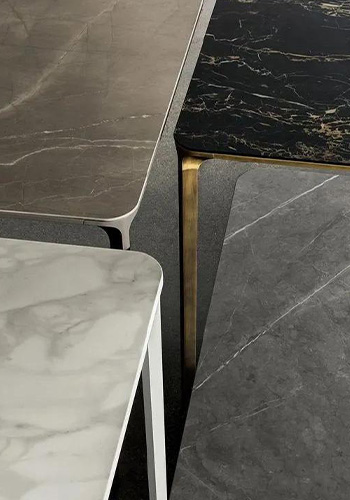
Eco-Friendly: The production process of sintered stone is environmentally friendly, utilizing natural materials and often incorporating recycled content. Additionally, it produces less waste and emissions compared to traditional stone processing.
Advantages Over Other Materials
Compared to Natural Stone: Sintered stone offers greater consistency in color and pattern, improved durability, and enhanced resistance to stains and scratches.
Compared to Quartz: It provides superior heat resistance and a more natural appearance, while also being more environmentally friendly in its production process.
Compared to Ceramic and Porcelain: Sintered stone is generally stronger and more resistant to impact, making it suitable for a wider range of applications.
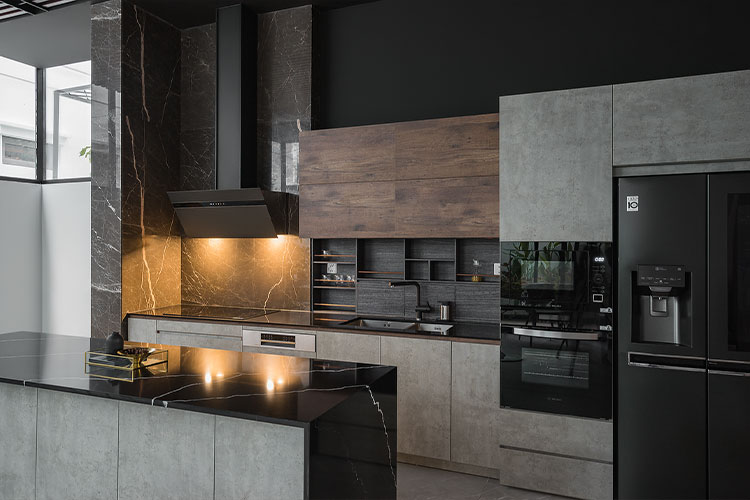
Applications of Sintered Stone
Feature Walls: Sintered stone is ideal for decorating feature walls. Its large size reduces seams and enhances expansiveness, creating a sense of spaciousness. The controllable and malleable textures of sintered stone, when cleverly designed, can perfectly present a unique aesthetic, exuding sophistication and elegance.
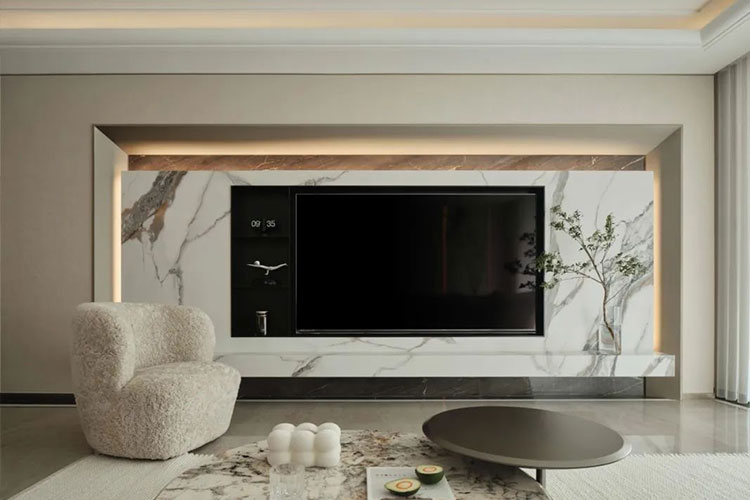
Kitchen Countertop / Bartop: Sintered stone is an excellent choice for kitchen countertops and bar tops due to its high resistance to heat and fire. Its high density results in an almost zero water absorption rate, making it impervious to stains and easy to clean. Its eco-friendly and antibacterial properties make it safe for direct contact with food and ideal for food prep.
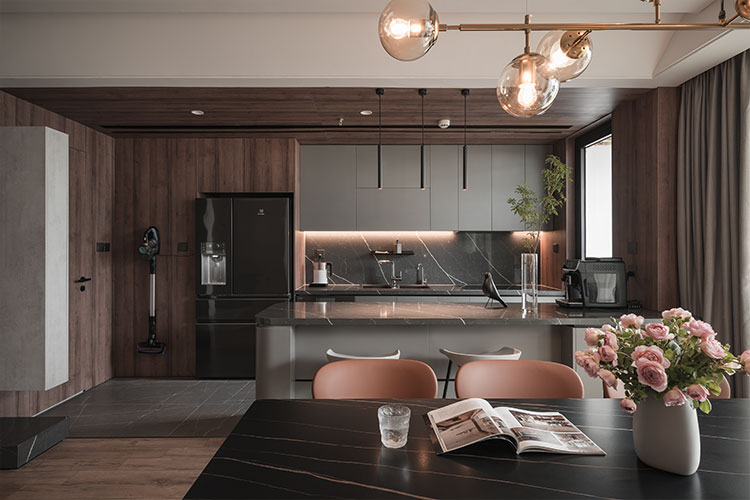
Cabinet and Wardrobe Door: Sintered stone features naturally elegant textures. When used as cabinet or wardrobe door panels, it exudes a distinct sense of luxury. Beyond its aesthetic versatility, sintered stone is also fire-resistant, moisture-proof, durable, and easy to clean, making it an excellent choice for cabinetry.
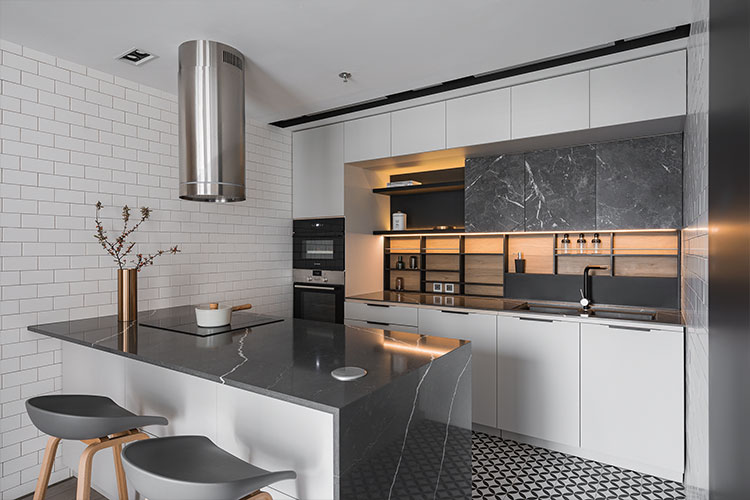
Bathrooms Vanity Countertop: Sintered stone has passed UHA (UHA, UHB, UHC high concentration acid and alkali) tests, making it resistant to daily bathroom chemicals and acids. Its diamond-grade hardness makes it impervious to impacts and its zero water absorption rate is perfect for bathroom use, preventing water damage and discoloration. Its high density and stain resistance make it ideal for bathroom cabinets and bathtub surrounds, adding a touch of luxury to any bathroom setting.
